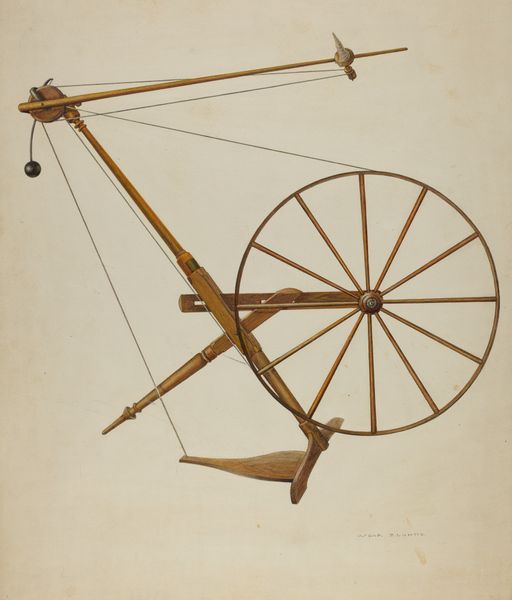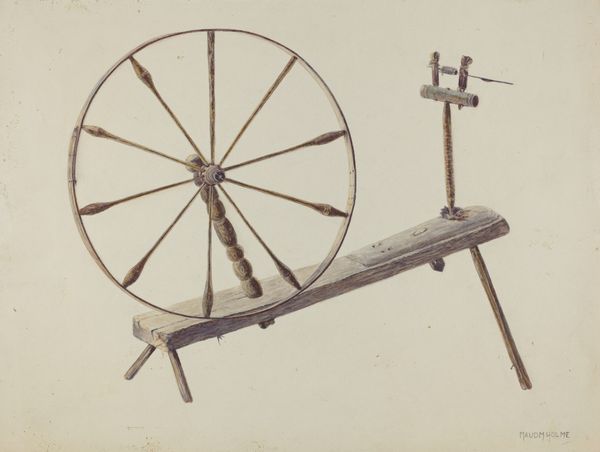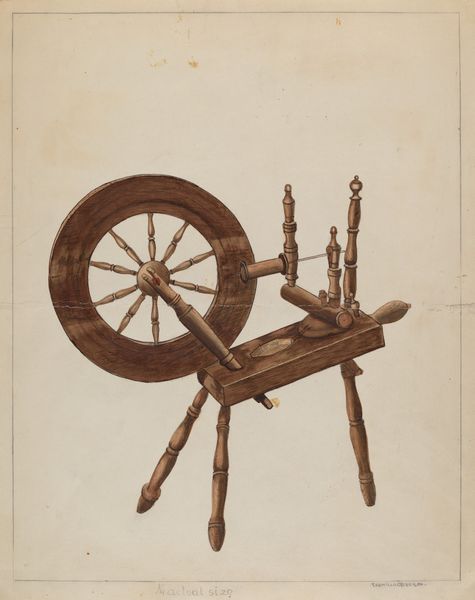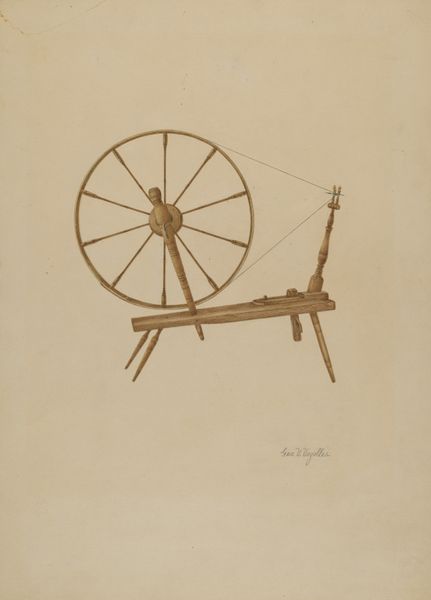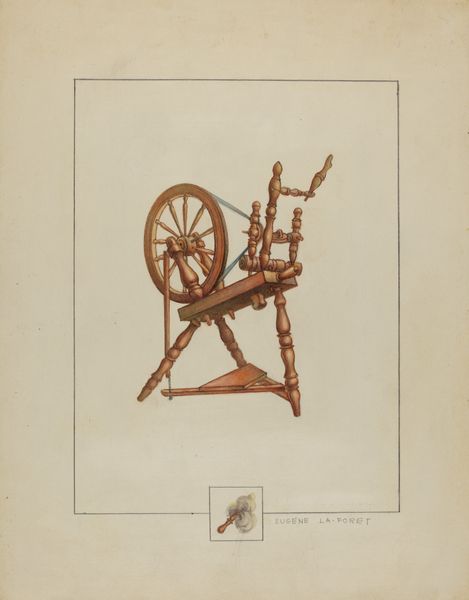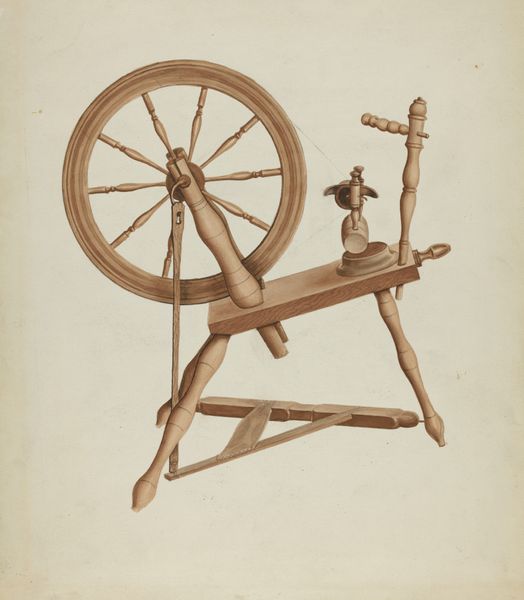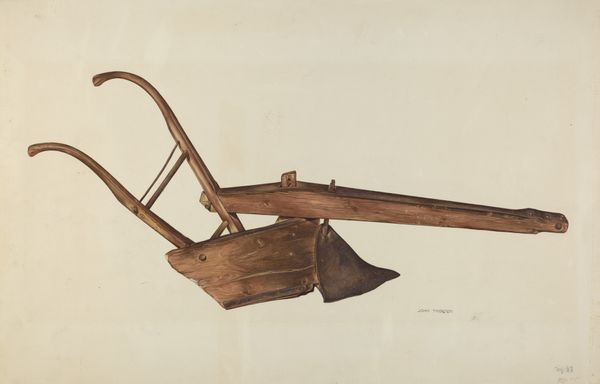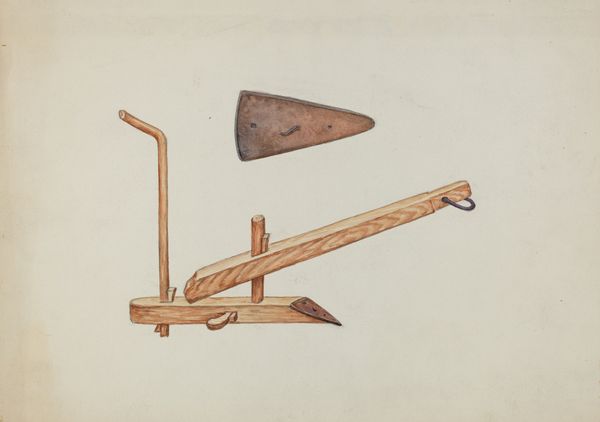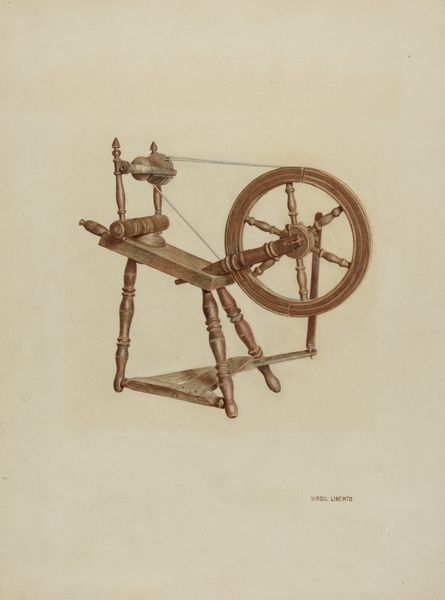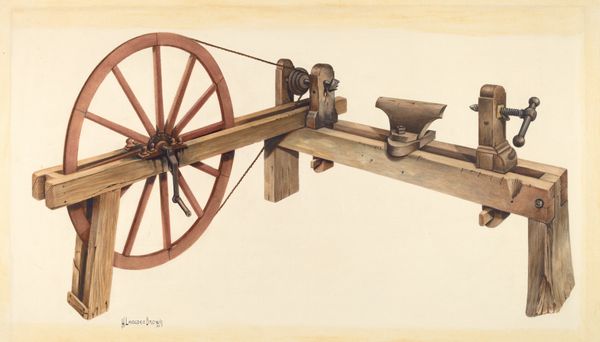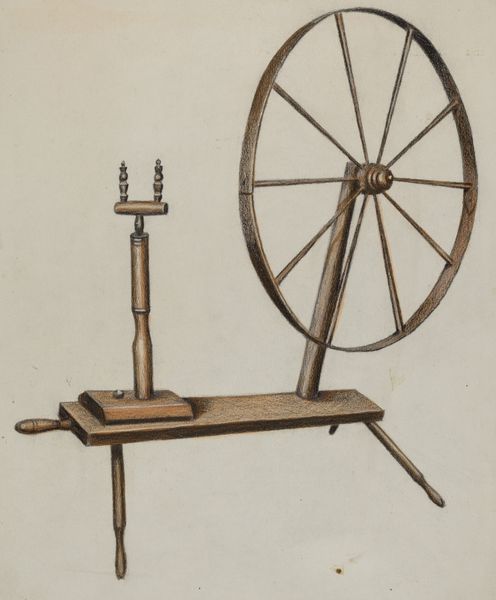
drawing, watercolor, pencil
#
drawing
#
watercolor
#
pencil drawing
#
geometric
#
pencil
#
watercolour illustration
#
realism
Dimensions: overall: 28.2 x 35.6 cm (11 1/8 x 14 in.)
Copyright: National Gallery of Art: CC0 1.0
Curator: Max Fernekes’ "Model Potato Planter," created in 1938, uses watercolor and pencil to depict its subject. The artist employs a realist style. What do you make of it? Editor: It feels…stark. Bleak, even. It's a simple machine, meticulously rendered, but the monochrome palette drains any sense of life from it. There is an unnerving stillness. Curator: Considering the historical backdrop, the 1930s, especially in rural communities, agricultural tools possessed significance beyond their functional role; these tools symbolized survival and self-sufficiency in a time of immense hardship. Understanding the planter in terms of labor and gender also adds a vital layer; it evokes the toil expected of individuals to secure their livelihoods. Editor: That is interesting, that despite this association, the symbols don't connect. I am reminded of the wheel, an emblem of progress. But the implement in this image seems frozen, stripped of forward motion, stuck in a bygone era. Is the monochromatic aesthetic perhaps alluding to memories fading from lived experience? Curator: Memory is intertwined with the land. It is relevant that there isn't a cart load of harvested potatoes present in this work, but an empty one, open to the possibility, representative of the labour to come. Consider the visual emphasis of the pull and planting apparatus. The suggestion is that the artist wanted us to confront the hard facts of how living is carved out. Editor: True, it's uncluttered; there are only stark lines and planes in the representation. So the iconography becomes associated with what ISN'T depicted rather than what is present? A potential for labor? Curator: Precisely. We're positioned to face realities inherent in survival in this very delicate moment. Editor: And even more resonant when you remember this artwork may also recall memories of forced labor imposed on marginalized communities during the era as well. Curator: Precisely, that is always implicit in the subtext, as the promise is frequently not afforded to all. Editor: Seeing it that way shifts my perception entirely; this silent potato planter becomes a loud statement of resilience and a reminder of the burdens unevenly distributed. Curator: I’m so glad that we were able to look at the layering of the image through these dual viewpoints. Editor: Agreed, a vital look at symbolism amid inequity in agricultural history.
Comments
No comments
Be the first to comment and join the conversation on the ultimate creative platform.

